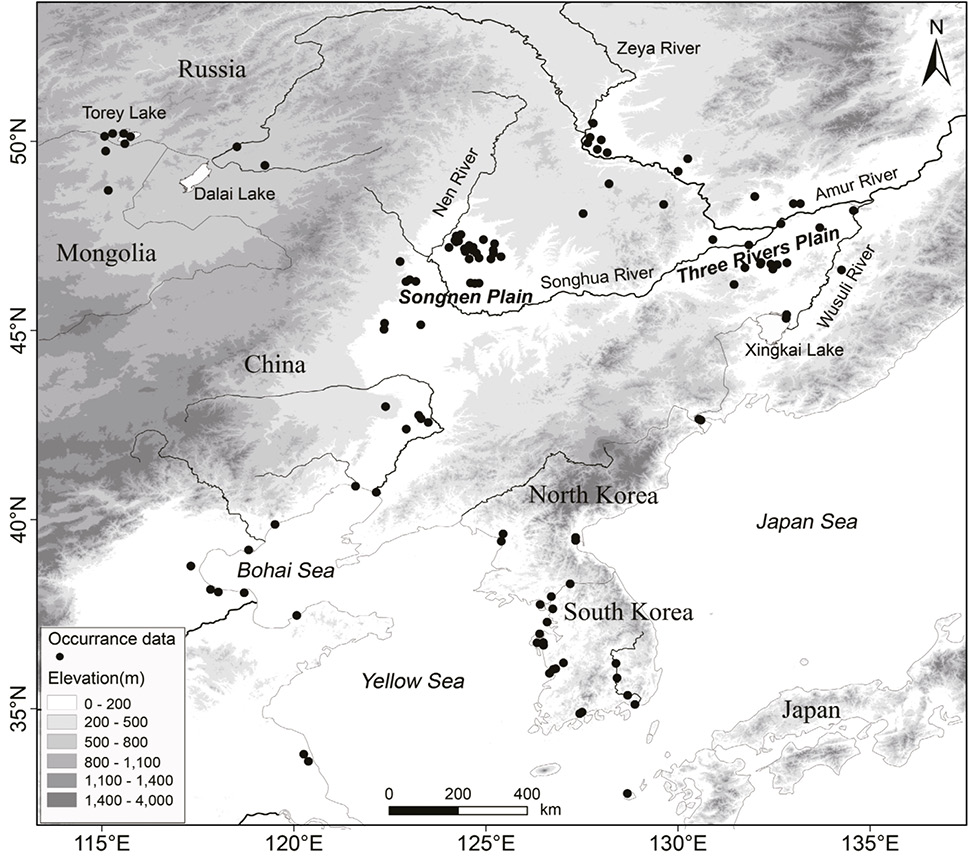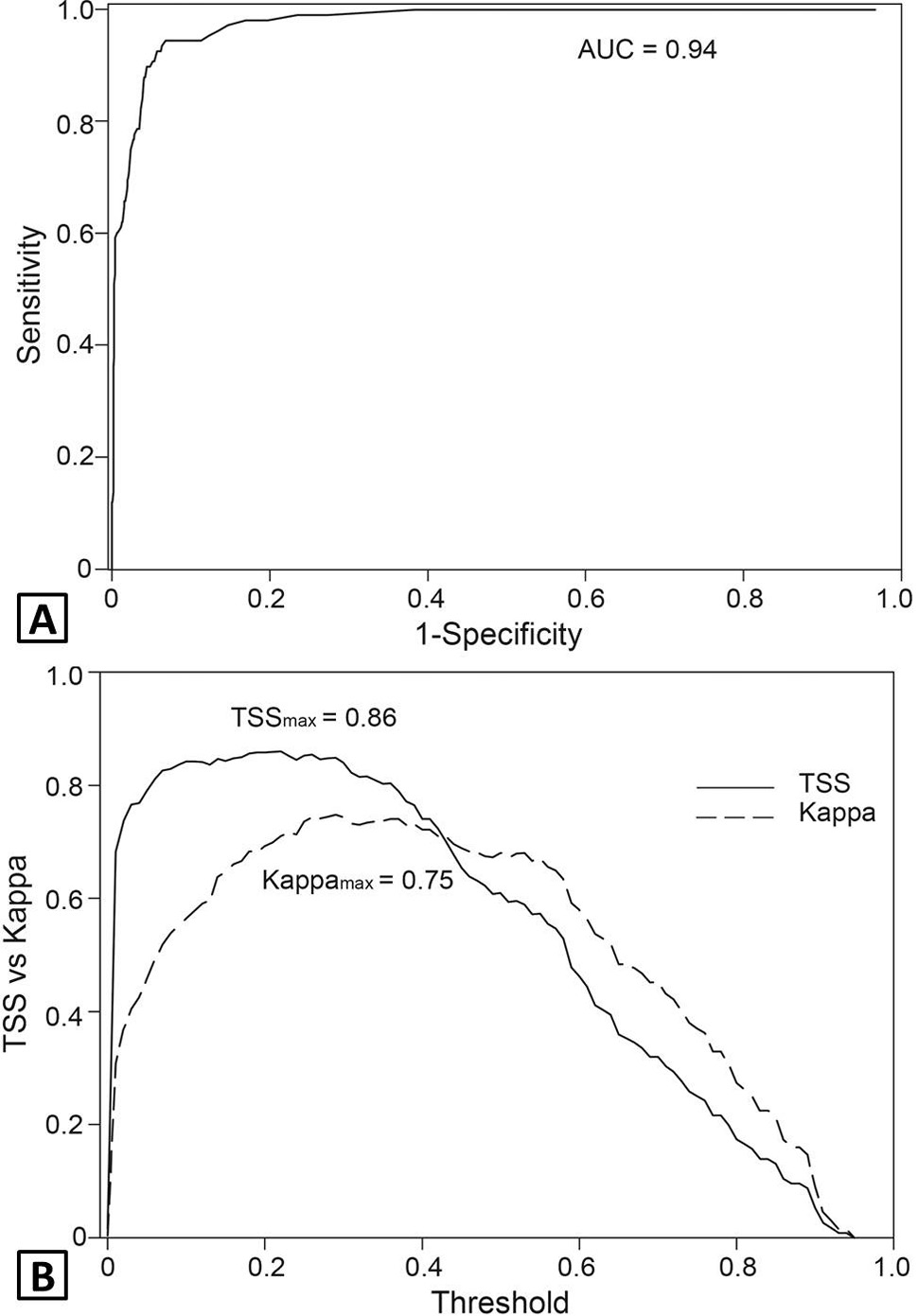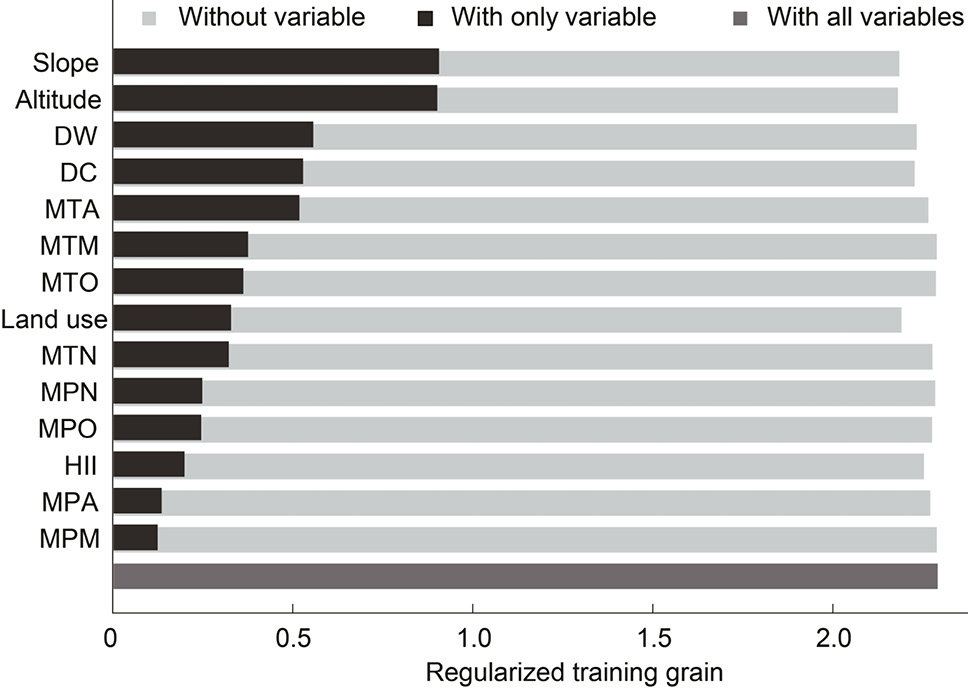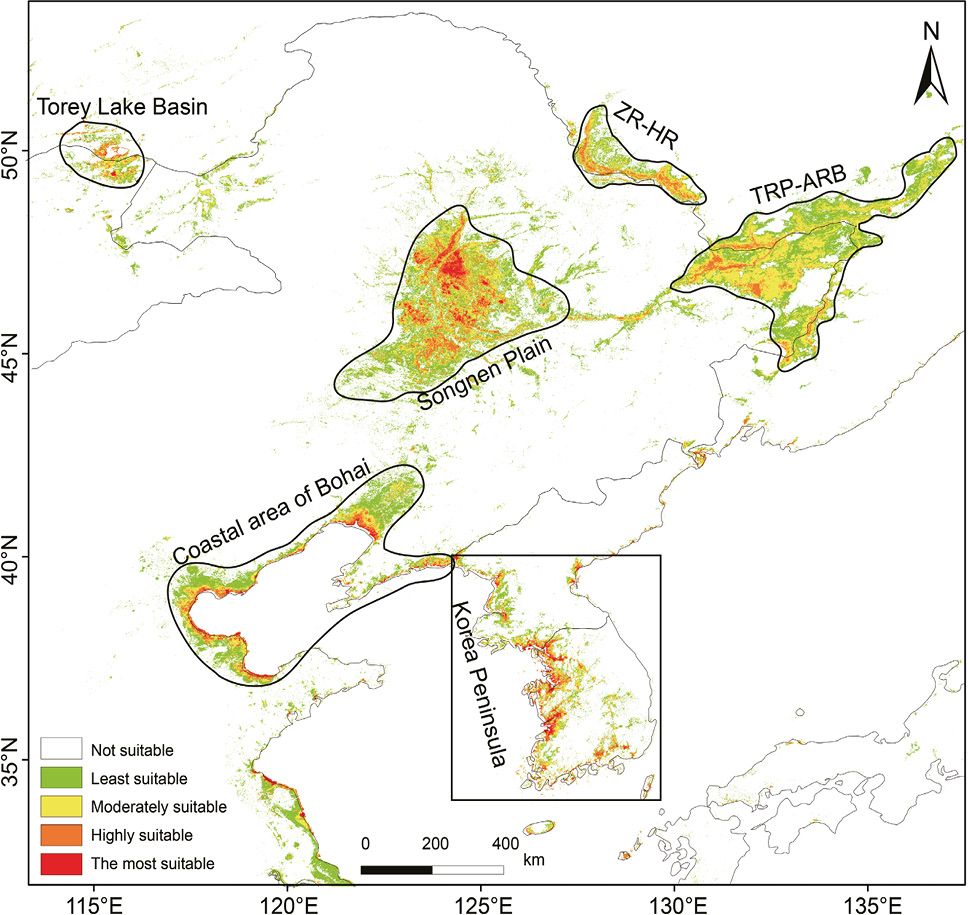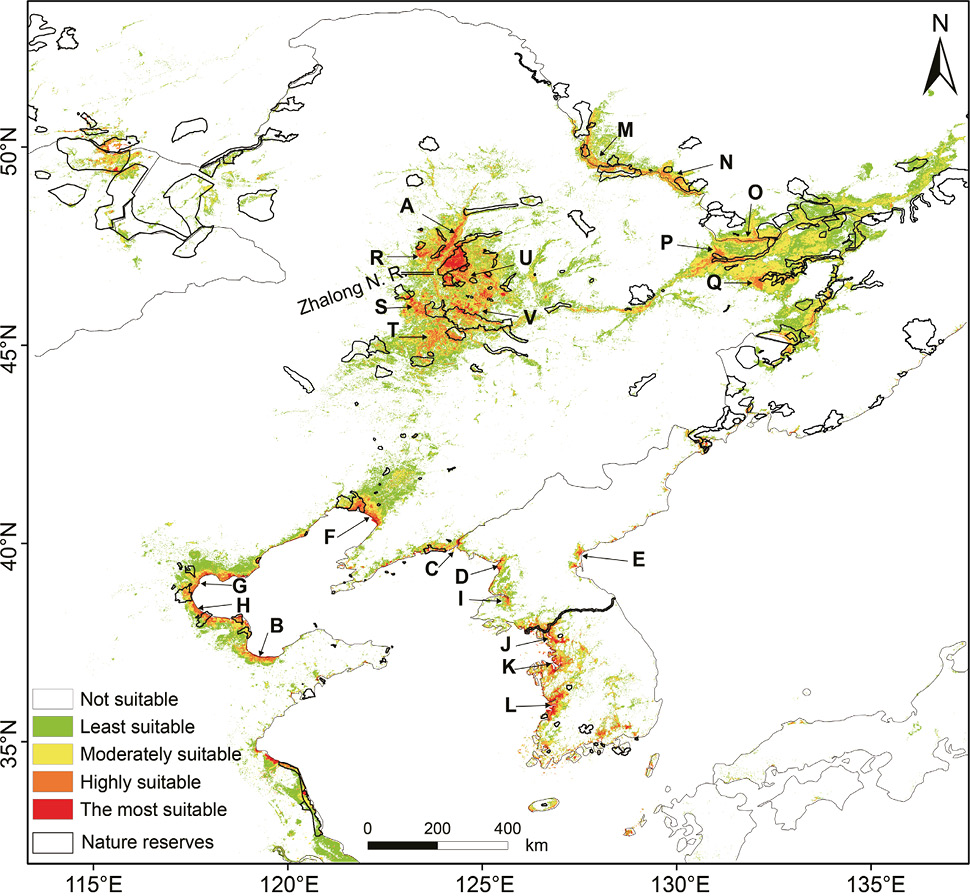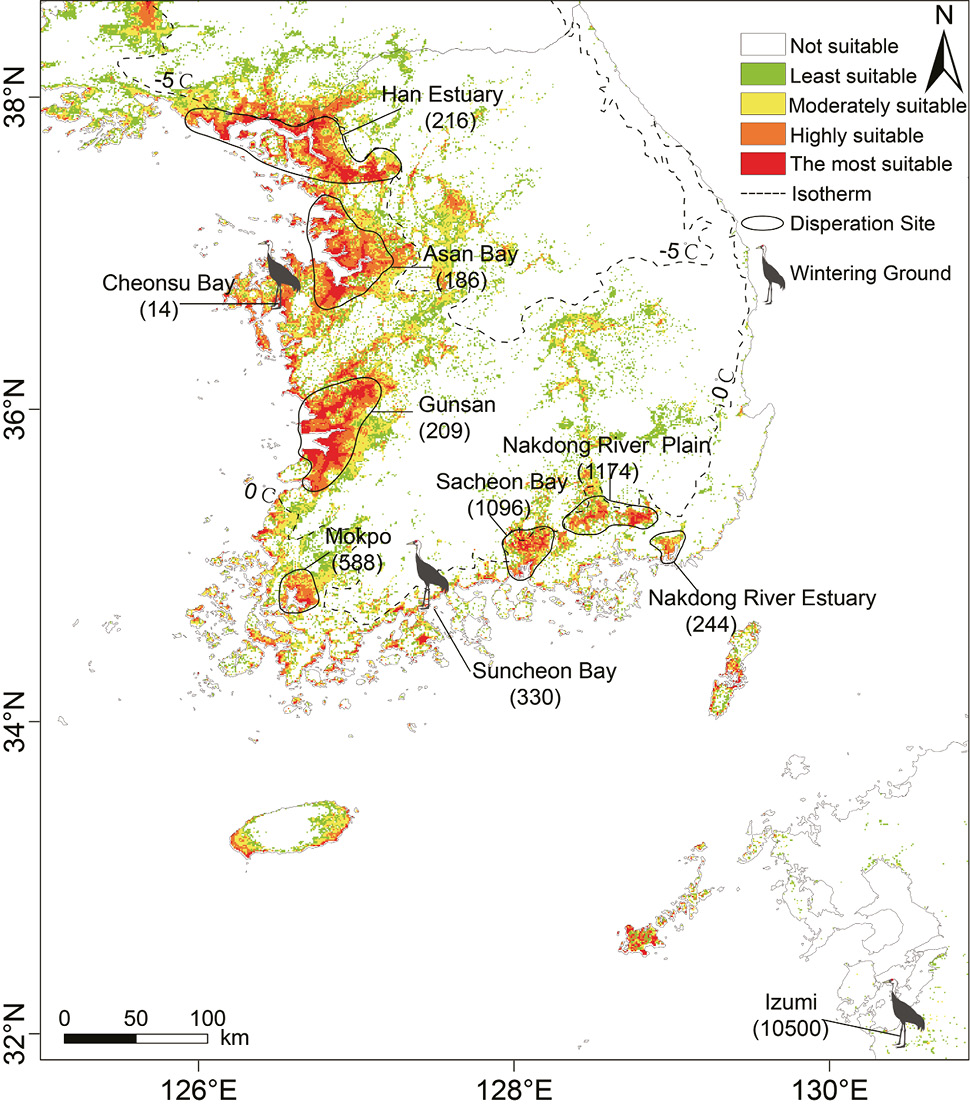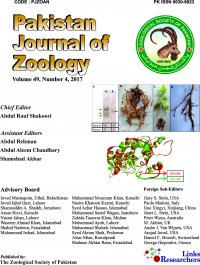Analyzing Stopover and Wintering Habitats of Hooded Cranes (Grus monacha): Implications for Conservation and Species Dispersion in the East Asia
Analyzing Stopover and Wintering Habitats of Hooded Cranes (Grus monacha): Implications for Conservation and Species Dispersion in the East Asia
Tianlong Cai1, Falk Huettmann2, Kisup Lee3 and Yumin Guo1,*
Topographic map of the study area and species occurrence data used for modeling.
Results of three methods to evaluate the model: A, the area under the receiver operating characterisitic curve (AUC); B, Cohen’s Kappa and True Skill Statistic (TSS).
Result of the jackknife test of environment variable importance. Black bars indicate the gain achieved when using that predictor only and excluding the remaining predictors; light gray bars show how the total gain is diminished without the given predictor. Distance to waterbody (DW), distance to coastline (DC), human influence index (HII), mean temperature of March (MTM), April (MTA), October (MTO) and November (MTN), mean precipitation of March (MPM), April (MPA), October (MPO) and November (MPN).
Spatial distribution of the hooded crane habitat suitability index (HSI). Zeya river-Heilongjiang River (ZY-HR) and Three Rivers Plain-Amur River Basin (TRP-ARB).
Nature reserves in the study area and conservation priorities (arrows).
Map showing species dispersion of hooded cranes from Izumi to South Korea.







